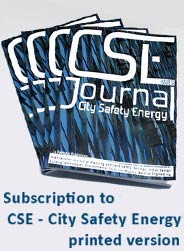Energy aspects of urban planning. The urban heat island effect
Abstract
The research aims to analyze the tight relationship between the conformation of the city and the urban climate. The “heat island” phenomenon, typical of big urban centers, has a great impact on external temperatures, causing their increase compared to the surrounding rural areas. The study points out that the main factors responsible for such phenomenon are: the high percentage of built-up areas, the considerable presence of impermeable areas at the expense of the permeable ones, particularly green areas, the introduction of artificial heat in the atmosphere, generated by the combustion of hydrocarbon for transportations and domestic uses. Moreover a pivotal role is played by the urban canyons (which are generated by the geometrical configuration of the spaces among the buildings), the morphology of the urban tissue and the radiation properties (such as albedo and emissivity) of the surfaces. These considerations are confirmed by the results obtained in the experimentation conducted, in the city of Bari. Actually the results demonstrate that light color surfaces, with a higher level of albedo and wider green areas in some neighborhoods of Bari leads to a drop in temperatures of the external air, even of some degree days in the summertime.
The experimentation conducted outlines a guideline which considers the energy aspects of urban planning, thanks also to the possibility of realizing simulations by means of some particular software (suitable for the study of surfaces-vegetation-air interactions in the urban context) and to define different scenarios of project planning.
Keywords
Read the full text
PDFReferences
Ali-Toudert, F., and H. Mayer. “Effects of asymmetry, galleries, overhanging facades and vegetation on thermal comfort in urban street canyons,” Solar Energy, no. 81 (2007): 742–754.
Batchelor, G.K. An Introduction to Fluid Dynamics. Cambridge: Cambridge University Press, 1967.
Bruse, M. ENVI-met 3.0: Update Model Overview, 2004, www.envi-met.com.
Fahmya, M., S. Sharplesa, and M. Yahiya. “LAI based trees selection for mid latitude urban developments: A microclimatic study in Cairo, Egypt,” Building and Environment, no. 45 (2010): 345–357.
Jendritzky, G., A. Maarouf, and H. Staiger. “Looking for a Universal Thermal Climate Index UTCI for Outdoor Applications.” Windsor-Conference on Thermal Standards, April 5-8, 2001. UK: Windsor.
Huttner, S., M. Bruse, and P. Dostal. “Using ENVI-met to simulate the impact of global warming on the mi-croclimate in central European cities.” In 5th Japanese-German Meeting on Urban Climatology, edited by H. Mayer and A. Matzarakis, 307–312. Freiburg: Berichte des Meteorologischen Instituts der Albert-Ludwigs-Universität Freiburg, 2008.
Lahme, E., and M. Bruse. Microclimatic effects of a small urban park in a densely build up area: measurements and model simulations, proceedings of ICUC5, Lodz, 1-5 September, 2003.
Landau, L.D., and E.M. Lifshitz, E.M. Fluid mechanics, Course of Theoretical Physics 6. Oxford: Pergamon Press, 1987.
Lowry W.P. “Empirical estimation of urban effects on climate: a problem analysis,” Journal of Applied Meteorology, no. 16 (1977): 129–135.
Oke, T.R. “Towards better scientific communication in urban climate,” Theoretical and Applied Climatology, no. 84 (2006): 179-190.
Selicato, F. Bari. Morfogenesi dello spazio urbano, Bari: Adda, 2003.
Stewart, I.D. “Landscape representation and the urban-rural dichotomy in empirical urban heat island literature, 1950-206,” Acta Climatologica et Chorologica Universitatis Szegediensis, Szeged, no. 40-41 (2007): 111–121.
Yoschino, M.M. Climate in a small area. Tokyo: University Tokyo Press, 1975.
Yu, C., and W.N. Hien. “Thermal benefits of city parks”, Energy and Buildings, no. 38 (2006): 105–120.
DOI: http://dx.doi.org/10.12896/cse2014001008
Refbacks
- There are currently no refbacks.

This work is licensed under a Creative Commons Attribution 3.0 License.
CSE Journal - City Safety Energy is a semiannual journal (Two ISSUES per Year) published by Le Penseur in Brienza (PZ) - Italy | ISSN print edition 2283-8767 | ISSN online edition 2284-3418 - Journal registerd at the Court of Potenza (Italy) n. 219/2014


